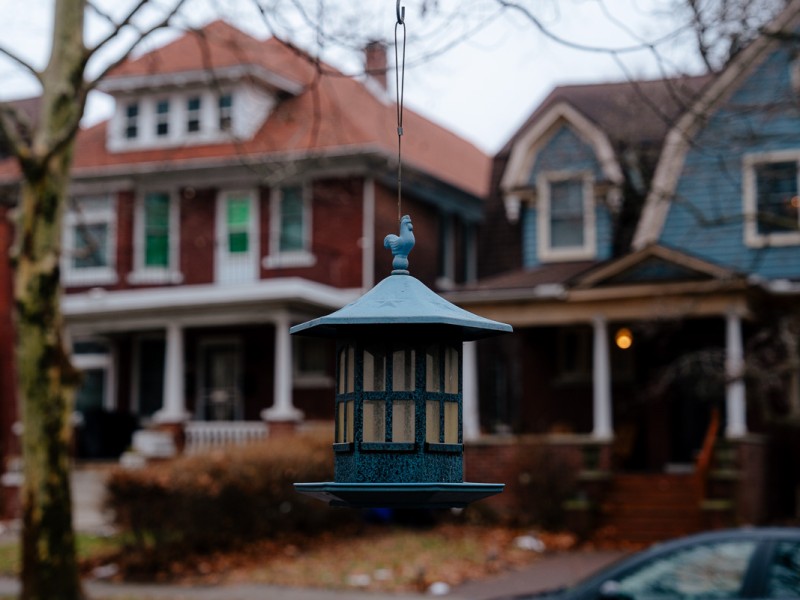Growing Detroit Retail
A D.C.-based nonprofit has some shiny new numbers that could mean exciting things for Detroit’s retail prospects. Read about it here, and see for yourself at our Speaker Series Nov. 14. Sign up today.
John Talmage is coming to Detroit armed with all kinds of cool new maps. That might not sound so cool to all you non-cartographers out there, but these maps are powerful.
Talmage is president and CEO of a D.C.-based nonprofit called Social Compact, which has been tapped by the city’s development gurus to study the potential for retail development in Detroit. The research outfit has done the same to measurable success in places like Cleveland, Houston and Washington, D.C. Now it’s the Motor City’s turn, and Talmage is psyched.
 His maps, color coded by neighborhood with all kinds of statistics on wealth, population, home ownership and education, reveal a city far healthier than your standard Census figures show. Retailers, he says, can stand to make a lot of money in a city that sends $2 billion in retail outside its limits, but has few national or even regional chains to its name.
His maps, color coded by neighborhood with all kinds of statistics on wealth, population, home ownership and education, reveal a city far healthier than your standard Census figures show. Retailers, he says, can stand to make a lot of money in a city that sends $2 billion in retail outside its limits, but has few national or even regional chains to its name.
“The numbers for several different neighborhoods will be very positive,” Talmage says, “I truly believe that the first (big retailer) in there is going to make a lot of money. Whoever gets there first, is going to have a tremendous market share.”
Talmage, with his cool maps, is the featured speaker at this month’s Model D speaker series at the Detroit Yacht Club on Belle Isle. Click here to sign up for the engagement at 8 a.m. Nov. 14. It’s free, but seating is limited and you must RSVP. The series is sponsored by the DYC and the Michigan State Housing Development Authority.
The event will include a panel of new Detroit retailers, including Joe Posch of Mezzanine, Rufus Bartel of Simply Casual, Liz Blondy of Canine to Five and Claire Nelson of Bureau of Urban Living.
Also on hand will be Olga Savic of the Detroit Economic Growth Corp., city’s public/private development arm. Savic and DEGC have been working closely to crunch the numbers and spread the word to retailers that the city is open for business.
Why do numbers matter so much? It opens doors, Talmage says. Of the different points a retailer looks at before choosing a location, the demographics are the first hurdle. “It starts with demographic data if the demographic data in a market doesn’t work, then retailers won’t even get to the other points,” he says.
 Social Compact uses something they call a “DrillDown” approach — a more comprehensive method than the traditional U.S. Census Bureau methods of gathering neighborhood demographics. They examine all manner of data, including credit histories, utility company turn-on rates, and other sources to find people, new housing developments and other information the Census may have missed.
Social Compact uses something they call a “DrillDown” approach — a more comprehensive method than the traditional U.S. Census Bureau methods of gathering neighborhood demographics. They examine all manner of data, including credit histories, utility company turn-on rates, and other sources to find people, new housing developments and other information the Census may have missed.
In Detroit, they’ve collected some data that Savic and Talmage both say is exciting and promising:
* Detroit has 933,043 residents, nearly 62,000 more than the Census reports.
* The average income of a Detroit household is $48,000, as opposed to the 2000 Census estimate of $40,900.
* There is $800 million of informal economic activity in Detroit’s economy each year. This is income like tips, side-consulting, baby-sitting and the like that do not register on traditional market measures.
* The aggregate income of Detroit households, $15.8 billion, is $2 billion greater than indicated by 2000 Census estimates.
“There are a number of areas of the city that we saw homeowner income was higher than expected, and it wasn’t just in the downtown area,” Savic says. “People with more money are moving in, and it’s not always in these sexy downtown areas.”
Talmage says there will be many neighborhoods in the city that will show strong demographics for attracting retail.
“What I find gratifying about it is that intuitively, Mayor Kilpatrick, George Jackson (of DEGC) and Olga knew those numbers were there, they just didn’t have the numbers to prove it,” Talmage says. “To be able to give them the numbers that prove it is a really gratifying thing.”
OK, so Talmage has some fancy maps. Savic and DEGC now have some pretty numbers. What’s next?
 One thing the Social Compact study has given them is the ability to provide neighborhood-level data to development groups ready to recruit retail. This is important because they way Detroit is laid out, with so much industrial area and vacant areas, the data the Census offers, usually by zip code, skews the numbers to mask the city’s healthiest areas.
One thing the Social Compact study has given them is the ability to provide neighborhood-level data to development groups ready to recruit retail. This is important because they way Detroit is laid out, with so much industrial area and vacant areas, the data the Census offers, usually by zip code, skews the numbers to mask the city’s healthiest areas.
Savic says, for example, she recently was able to help some Southwest Detroit leaders looking to bring in retail. “What I was able to offer them a very barebones profile of their community, and zero in on some better than average neighborhoods to help really realize what those strengths are.”
And Talmage says his group is showing the Detroit data to retailers it has relationships with, many who have a track record opening in cities. DEGC is also shopping the data around, working to recruit new business.
“By no means is this a silver bullet,” Talmage says of the report. “However, what distinguished Detroit’s efforts from some is that they’ve built an entire strategy around recruiting investment. DEGC has a clear strategy. That’s what makes this effort so worthwhile.”
Model D’s speaker series continues Nov. 14 at the Detroit Yacht Club on Belle Isle. John Talmage of Social Compact and Detroit retailers will be featured. Click here to sign up. Registration is at 8 a.m. Speakers start at 8:30. The event is free, but seating is limited and you must RSVP here. The event is sponsored by the DYC and the Michigan State Housing Development Authority.
Photos:
Mezzanine, on Broadway
Canine To Five
Bureau of Urban Living, on West Canfield
Olga Savic
All Photographs Copyright Dave Krieger




